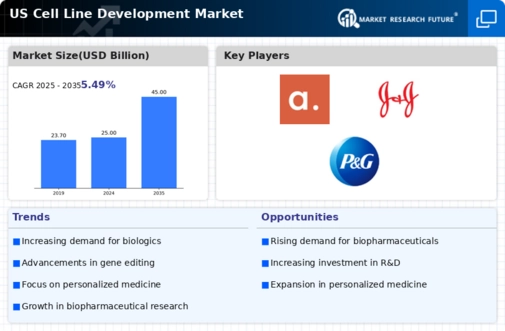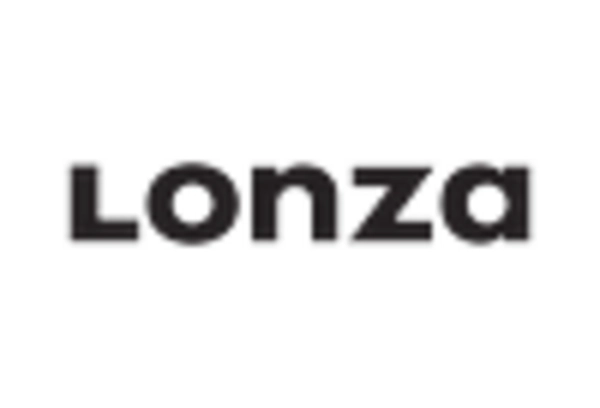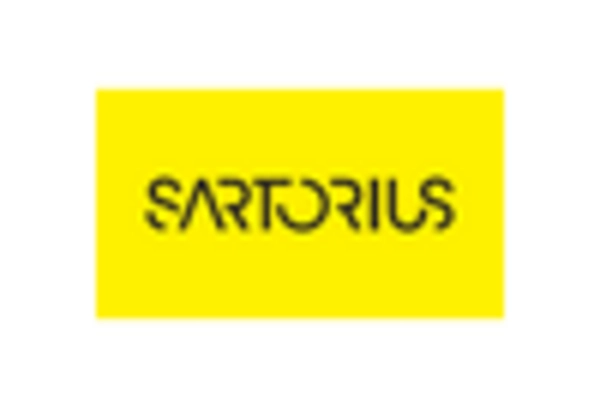Rising Investment in Biotechnology
The cell line-development market is experiencing a surge in investment from both public and private sectors. In the US, biotechnology firms are increasingly allocating substantial funds towards research and development, which is projected to reach approximately $200 billion by 2026. This influx of capital is likely to enhance the capabilities of cell line-development, enabling the creation of more sophisticated and efficient cell lines. Furthermore, venture capital investments in biotech startups have seen a notable increase, indicating a robust interest in innovative solutions within the cell line-development market. This financial backing is essential for advancing technologies and methodologies, ultimately driving growth in the industry.
Growing Prevalence of Chronic Diseases
The rising incidence of chronic diseases in the US is a significant driver for the cell line-development market. As conditions such as cancer, diabetes, and cardiovascular diseases become more prevalent, there is an increasing need for effective therapeutic solutions. The cell line-development market plays a crucial role in drug discovery and development, providing essential tools for researchers to understand disease mechanisms and test new treatments. According to recent statistics, chronic diseases account for nearly 70% of all deaths in the US, underscoring the urgent need for innovative therapies. This growing health crisis is likely to propel demand for advanced cell lines, thereby stimulating growth in the market.
Increased Focus on Personalized Medicine
The shift towards personalized medicine is reshaping the landscape of the cell line-development market. As healthcare moves towards tailored therapies, the need for specific cell lines that can mimic individual patient responses is becoming more pronounced. This trend is particularly evident in oncology, where personalized treatments are gaining traction. The market for personalized medicine is projected to reach $2 trillion by 2025, indicating a substantial opportunity for the cell line-development market to provide customized solutions. This focus on individualized therapies is likely to drive demand for diverse and specialized cell lines, fostering growth in the industry.
Technological Innovations in Cell Culture
Technological advancements in cell culture techniques are significantly impacting the cell line-development market. Innovations such as 3D cell culture, CRISPR gene editing, and automated cell line generation are enhancing the efficiency and accuracy of cell line development. These technologies allow for the creation of more physiologically relevant models, which are essential for drug testing and development. The market for cell culture technologies is expected to grow at a CAGR of around 10% over the next few years, reflecting the increasing adoption of these advanced methodologies. As researchers seek to improve the reliability of their results, the demand for innovative cell line-development solutions is likely to rise.
Expansion of Research Institutions and Laboratories
The expansion of research institutions and laboratories in the US is a key driver for the cell line-development market. With an increasing number of academic and private research facilities being established, there is a growing demand for cell lines to support various research initiatives. This trend is supported by government funding and grants aimed at promoting scientific research, which have seen a rise of approximately 5% annually. As these institutions seek to advance their research capabilities, the need for high-quality cell lines becomes paramount. This expansion is expected to contribute significantly to the growth of the cell line-development market, as more researchers require access to diverse cell line resources.

















Leave a Comment